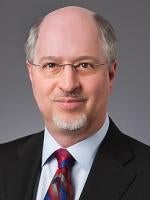This week in New York, many leading health systems came together for the long-running Not-For-Profit Health Care Investors Conference, now sponsored by Barclays, HFMA and the American Hospital Association. The conference allowed investors and industry observers to take the pulse of the nation’s non-profit health systems and to note some interesting trends.
Ambient Listening: Six health systems discussed their use of “ambient listening” to reduce physicians’ “pajama time.” What does that mean? Well, as we all know, with EHRs, physicians now have to do data entry for their patients, filling in the blanks on their EHR forms if they can’t finish up their work during their patient session. That occurs during the workday or at night at home (i.e., pajama time), and it has been a source of physician frustration and burn-out. There are multiple vendors looking to solve that through “ambient listening” where patient and physician interactions are listened to and captured by a software system that then uses natural language processing and other artificial intelligence capabilities to enter the data into the proper fields in the EHR medical record for the patient. It’s essentially a robot scribe, without the creepy robot sitting in the corner of the exam room. This has been in trial for years, including prior to the pandemic, but now every health system using this approach reported at the conference that it was working well and was generally saving physicians between 45 minutes to two hours per day of data entry. As one system reported, the physicians are much happier to be able to spend more of their time doctoring instead of typing, patients are happier that the physician is looking at them and not at their computer or tablet, and between 1-2 more patient visits per day now is possible. This is definitely a step in the right direction and hopeful news for the rest of the healthcare ecosystem. We’ll be watching to see if this effectiveness continues and grows as it rolls out further across the industry.
Have You Noticed the “Journey?”: I should have been playing turkey bingo at the conference, or perhaps a drinking game where you took a shot every time someone said the word “journey.” It now appears that the entire conference is on a journey, as presenter after presenter characterized everything as a journey – our transformation journey, our quality journey, our leadership journey, our value-based journey. They weren’t the only ones using “journey” more than usual – it’s evidently a journey pandemic out there, with everything being characterized as a journey, per the New York Times recent article (“When Did Everything Become a Journey?,” May 13, 2024) and especially one’s heath journey. Knew I should have bought travel insurance before starting this journey….
Provider-Sponsored Health Plans: For many years, health plans owned by health systems often were the ugly stepchild. Not really prioritized by the system, separate and unequal and not well coordinated between the plan and providers. There were some clear examples of better integration, such as Geisinger, but they were the exception. This state of affairs may well be changing. Sentara, Corewell and UW Health all set out interesting theses for growing “Systemness” and connecting the dots between their plans and their provider assets. Sentara at this point is approximately 50/50 in revenue between the two lines of business, with recent expansion of their plan business into Florida to be followed by provider expansion. This expansion of their share of the premium dollar can allow a health system to undertake innovative changes, such as Sentara is doing. They have decided to allocate enterprise responsibility for care management to their health plan with the ability now to direct care management assets in the acute, post-acute and outpatient/ambulatory sectors. Previously, a patient upon discharge from the hospital could receive care management calls from three Sentara care managers, including the health plan, the acute or post-acute and the physician care management groups. That now will be centralized and improved. Similarly, Sentara is centralizing responsibility for its enterprise pharmacy, reducing the previous fragmentation that commonly is seen in the industry among doctors, facilities and the health plan. By centralizing the function under a single leader with profit and loss responsibility, it allows for more effective accountability and innovation.
This also is a prelude to readiness for taking provider risk downstream from the health plans – a key element in risk readiness when shifting into downside risk-based reimbursement structures such as in Medicare Advantage and Medicaid. In lines of business where the government does not fully cover the cost of care, a way to control rising healthcare expenditures is to invest in prevention, chronic disease management and access improvements to reduce unnecessary utilization of higher cost emergency and inpatient resources. It is difficult to achieve the necessary cash flow in a fee for service environment (which represents more than 70% of all downstream Medicare Advantage payments today, according to the Advisory Board) but the prepayment under value-based and risk-based reimbursement systems allows for the necessary capital allocation.
Days Cash On Hand: The presenting systems generally reported days cash on hand of at least the mid 200 days, and often into 300 days or higher. This is encouraging news for health systems, but conversely EBITDA margins for reporting entities – even at the top of the list – remained lower than pre-pandemic. While recovering somewhat, there remains significant margin pressure, in large part from continuing higher labor costs, higher financing costs and declining federal reimbursement rates. So, not necessarily a light at the end of the tunnel, but at least not an immediate crash for many of the larger health systems that were reporting their results.
Continuing Growth and Innovation: Many systems focused their presentations on recent and continuing growth. We expect to see more acquisitions, joint ventures and strategic alliances in the hospital sector in the next few years as health systems continue to look to not only achieving greater scale, but also aim to integrate and coordinate their service offering across the entire system. As one system CEO noted, we often found ourselves having two subscale programs in geographic proximity to each other, and not doing enough of a specialty surgery at a location can result in worse outcomes due to lack off enough experience for the team. So, they are moving and consolidating lines of business to get to scale and to determine what services have to be at what facility. This building outwards, while rebuilding inside is, as one health system leader said, like trying to repair the airplane while it is flying, but it is necessary for success and survival.
The Many Uses of Artificial Intelligence: Coming in as second most mentioned behind “journey” was “artificial intelligence.” There were opinions galore at the conference but little yet in the way of consensus as to how to best use artificial intelligence (AI). Some interesting notes included the use of AI to screen all X-ray images for secondary diagnoses – the things that may be found on an X-ray that were not the focus of the primary area of inquiry by the treating physician. Northwestern Medicine reported this effort and has screened approximately 2.5 million images to date, attempting to improve clinical diagnosis and give physicians more time.
The Mayo Clinic has a multi-faceted AI strategy. Mayo solicited input from all of its employees as to what functions and services could be improved through the application of AI, received many submissions and funded fifteen ideas. A key element of their strategy is its “foundation model” that will identify best practices for patients who meet certain criteria and can be grouped into categories. Mayo suggested that this could effectively make integrated knowledge, such as that obtained through a top-notch tumor board review approach, available through this AI model for patients globally. Other interesting Mayo areas were using AI in the context of genetic testing and counselling identification, as they reported a shortage of qualified genetic counselors which may be remedied in part through the appropriate use of AI as requested by treating physicians. More mundane but important uses included providing effective summarization of patient records for physicians who, in the case of a patient with a long treatment history, may take a physician over an hour in the absence of effective summaries. Mayo also was linking the source documents directly into the summaries to make access easier for the reviewing physician. That approach solved the “search” issue for physicians of making sure they had looked at everything and could go as deep or shallow as they wished in their review. This is a simple use of generative AI (genAI) but Mayo reported that it was saving a half-hour each time for its physicians who were looking to do patient whole record reviews. To make sure the AI app was being clinically appropriate, Mayo ran a volunteer “red team” event, where physicians on a Saturday could volunteer to evaluate the AI output and quality check it. Mayo said that they had high engagement from their physicians who were supportive of this effort.
Another health system reported that, using AI, automated licensure review was now being done and is almost fully automated. It also is reviewing 45% of its purchase orders using bots to ensure accuracy and compliance with purchasing guidelines. Another area of low value but high intensity was the required notice of admission to payors for patients entering the hospital. That has been requiring approximately 11,000 hours of work per year from multiple employees, and now can automated and reduce the staff allocated to this mindless task to one FTE.
On an AI discussion panel, an AI entrepreneur took issue with the clinical use cases and suggested that AI should stay away from clinical diagnosis – leaving that for the physician – and focus on other areas where there is immediate need, such as expanding and improving communications with patients. For example, Hippocrates AI has a generative AI driven service that can call patients shortly after hospital discharge or after prescription of a new medicine to check on how the patient is doing, check for side effects or issues, do a compliance check and see if the patient has questions. A demonstration of this genAI ability was interesting to listen to without a single cringe during the three to four minute interaction, and, due to genAI capabilities, could be undertaken easily in multiple languages to meet the patients’ preferred language choice. More progress to be made, but it illustrated an interesting opportunity.
The CEO of Hippocrates AI posited that the healthcare industry recently has been an environment of a “high acuity, low volume” profile for resource utilization – where healthcare resources are more rare and focus on higher acuity or “tipping point” events/conditions – and now could move to a “high volume, all acuity” approach where consumers could have an “AI healthcare friend/app” sitting on their shoulder and available as a first triage level with low cost and high scalability before a patient then would move onto a higher level interaction with a person. The genAI function also could be used to move effectively provide key educational themes to patients and their caregivers.
That said, the general consensus of the conference presenters was that AI was here and taking more and more health system mindshare but: (i) the “killer app” for AI (like Uber, social media or food delivery) has not yet arrived, and (ii) there is growing concern and exhaustion among health systems for taking on too many AI point solutions. Instead, there is a clear preference for an integrated AI platform that can allow multiple use solutions to be integrated and easily accessed, with data and other interoperability.
Kudos to Barclays, HFMA and AHA for another excellent conference!



 />i
/>i
